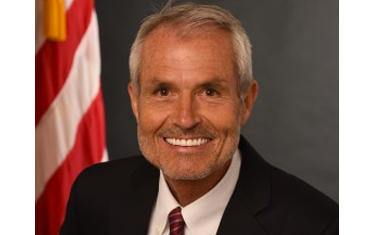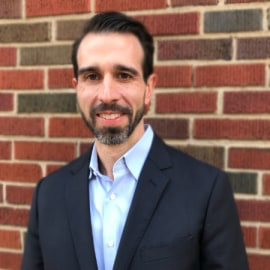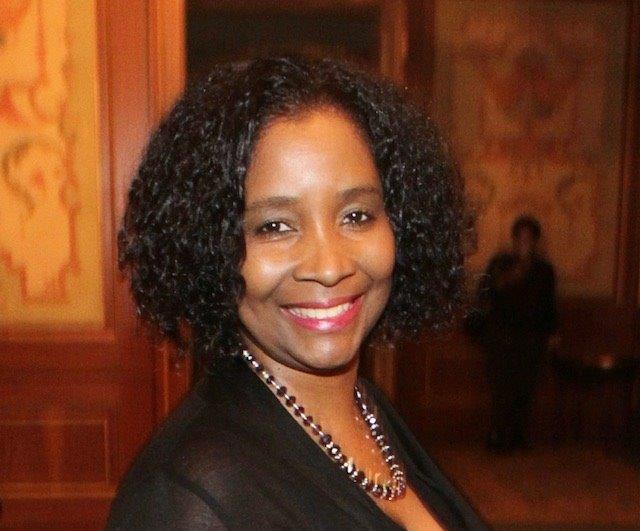
Waving signs reading “a mother’s love is forever” and “save our children,” scores of parents, justice advocates and lawmakers rallied on the steps of the California Capitol building last month demanding an end to the child welfare system’s unjust family separations. Amid hours of speeches and chants, they called for social services and support for struggling families — not punitive measures.
Speaking to the crowd of roughly 150, Lisa Negron described the searing experience of having two of her children taken into foster care and later adopted, without what she said was adequate due process. Negron is now a sober living program manager and addiction counselor.
“I’m fortunate enough to reunify families today with progress letters and to help people do the work,” she said, tearing up. “But yet I go to sleep at night without my two oldest daughters.”
Billed as the first protest of its kind in California, attendees at the Jan. 18 rally united in one particularly urgent appeal: Pressure state lawmakers to push back against a federal law that incentivizes adoption with federal funds and, they say, places unreasonable timelines and barriers on families who are already facing difficulties.
The 1997 Adoption and Safe Families Act’s central provision states that if a child has been in foster care for 15 out of 22 months, and parents have not corrected maltreatment concerns to the court’s satisfaction, local child welfare agencies are required to pursue termination of parental rights.
The law includes exceptions — which some national data suggests states take frequent advantage of. But the timelines typically fall heaviest on the incarcerated and parents working through substance use disorder programs, those at the Sacramento rally argued.

“Far too many of us coming out of prisons and jails and treatment programs have exceeded that 15 months, and our children are snatched away and adopted and we don’t get to see them,” said Vonya Quarles, co-founder and executive director of the Los Angeles transitional housing and re-entry program Starting Over and a steering committee member of the national “Repeal ASFA” campaign. “That has to stop.”
To alter this course for child welfare-involved families nationwide, in November, U.S. Rep. Karen Bass (D) of Los Angeles introduced the 21st Century Children and Families Act. The bill would extend federal timelines from 15 to 24 consecutive months, and exempt cases where a child is in foster care “based principally on the incarceration of a parent,” among other provisions.
Bass’ office did not respond to requests for comment on the bill’s progress or prospects for a hearing.
Days after the Sacramento rally, more support for the cause appeared, this time from two former top federal child welfare officials-turned private consultants. They titled the inaugural issue of a quarterly journal: “The Harm of the Adoption and Safe Families Act.” It includes nearly two dozen articles by top legal advocates for parents and scholars of social work, such as Katharine Briar-Lawson, dean emeritus of the School of Social Welfare at the University at Albany, and Vivek Sankaran, clinical law professor at the University of Michigan.
“It takes courage to acknowledge that the child welfare system has caused harm, and it takes courage to admit that the solutions to date have been inadequate at best and often injurious,” Jerry Milner and David Kelly wrote as an introduction to the 108-page tome. The former child welfare officials during the Trump administration became well-known for decrying what they saw as unnecessary family separations in foster care — a noteworthy position to take as the president they worked for pursued “zero tolerance” policies at the nation’s border that wrenched thousands of migrant kids from their parents.

Essays in the journal released in January — edited by Milner and published by Family Integrity & Justice Works — argue that legislative deadlines didn’t account for realities like substance abuse recovery timelines and mass incarceration. And the law prioritized adoption over pathways that kept family connections more intact, such as subsidized guardianships with relatives, they state.
Meanwhile, since ASFA’s passage, child welfare agencies nationwide have legally severed hundreds of thousands of young people from their biological families through termination of parental rights, without finding them adoptive homes — a state of limbo known as “legal orphanhood.”
Autumn Adams, a first-year law student and former foster youth, notes that Indigenous leaders, whose tribal communities are the most impacted of all demographic groups, had no involvement in ASFA’s drafting. Adams is a member of the Yakama Nation who cares for her siblings. She argues that the landmark law commodifies children, “counter to world views” of many tribal communities.
In sum, Milner and Kelly call the law “a direct threat to family integrity and child well-being.” They urge a significant reorientation or repeal of the law commonly referred to as ASFA.

The law took root in the mid-1990s, as policymakers began holding hearings on a pressing crisis: Foster care removals were skyrocketing, children were lingering too long without a stable home and the system strained like never before — yet adoptions were barely increasing. Experts testified that foster prevention services were far from adequate, and systems should move children to other permanent living situations more quickly.
“No child should be trapped in the limbo of foster care,” then-President Bill Clinton said in a December 1996 radio address. Clinton called for “urgent new adoption targets.” Then-First Lady Hillary Clinton played a key role in building support for ASFA, which passed with near-unanimous support in Congress and deep bipartisan collaboration.
Supporters of the 1997 law note it served its goal of increasing adoptions from foster care, efforts already under way in many states. It also sharpened agencies’ focus on moving children out of foster care more quickly — prioritizing adoption over family reunification efforts that could take years.
A former senior congressional staffer who helped craft ASFA said unlike other proposed child welfare reforms of late, it placed children “at the center” of the law.
“What if a parent is in drug rehabilitation for five years, or in jail for five years?” asked Cassie Statuto-Bevan, a former member of the U.S. Commission to Eliminate Child Abuse and Neglect Fatalities. “It’s something that doesn’t get asked that way anymore. It was asked when ASFA was developed.”
In a 2009 essay, a former commissioner of child welfare systems in Ohio and New York described the controversy surrounding ASFA. Some felt it was “the handiwork of Republican ideologues who disparaged the families (overrepresented by families of color) caught up in the child protection system,” John Mattingly wrote. Proponents were considered to be “often upper-middle class, white academics” attacking systems that served parents while overlooking their children’s needs.
But ultimately, ASFA’s assurance of some timely conclusion of life in foster care was necessary, said Mattingly, who went on to serve as a national child welfare consultant. “The feelings provoked by this crisis and this response, I believe, overwhelmed the ability of some of us to see the crying need for permanency for children drifting in foster care.”
The twin crises of the coronavirus pandemic that disproportionately devasted low-income communities and people of color, and protests over the murder of George Floyd in 2020, have heightened attention to the long-simmering debate over child welfare timelines.

Last March, President Joe Biden appointed Aysha Schomburg to take over the Children’s Bureau. In July, the former New York City child welfare official told a conference of attorneys for parents that she had recently learned of a 15-year-old father facing a termination of parental rights due to ASFA.
“That stays in my mind and makes me think, how many young fathers are out there and maybe want to take care of their children, but are maybe up against this timeline?” Schomburg said in a live-streamed address.
Views on how to change the timelines, or whether to scrap them entirely, vary widely. Neither Bass’ bill nor a pandemic-related bill that would have temporarily paused ASFA timelines — introduced by Rep. Gwen Moore of Wisconsin in 2020 — has received a hearing or co-sponsors.
Mark Testa, a recently retired professor in the School of Social Work at the University of North Carolina at Chapel Hill, is among the contributors to Milner and Kelly’s journal. Testa said in an interview Tuesday that he believes in more incremental changes, including promoting guardianship for kin caregivers to preserve family connections.
“ASFA did boost adoption rates. It did reduce the number of children in long-term care. And it helped bring down the number of kids in foster care,” he said. “At the same time, it created or ignored a number of other problems — the major one being this binary choice between adoption versus reunification — without recognizing the middle ground of guardianship where parents retain some rights to visitation and to consent to adoptions.”
But some who once worked to enforce the law have since turned against it in a more fundamental way. In her journal contribution, a former juvenile court judge from Georgia describes herself as “complicit” with a system she now rejects.
“Societal factors such as discriminatory employment and housing practices, criminal justice, mass incarceration, and policies that prevent fathers from actively participating in the household limit economic mobility for Black families,” wrote Karen Baynes-Dunning, a child welfare consultant who is also a former interim director of the Southern Poverty Law Center. “Thus, achieving case plan goals within ASFA’s arbitrary 15 of 22 months is tone-deaf to the realities of these societal factors.”
Jeremy Loudenback contributed to this report.





